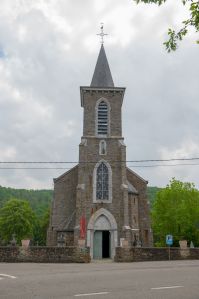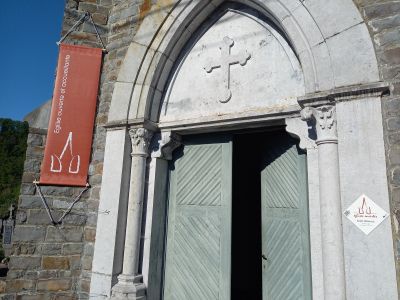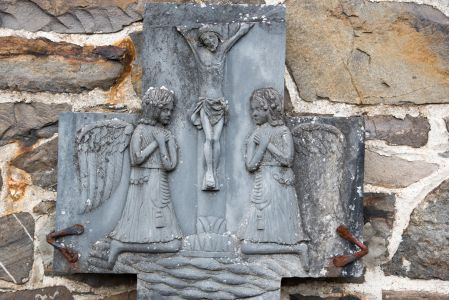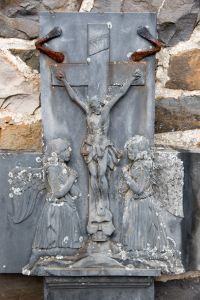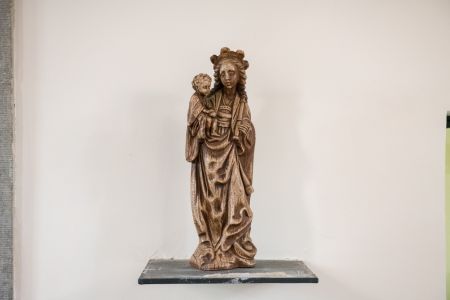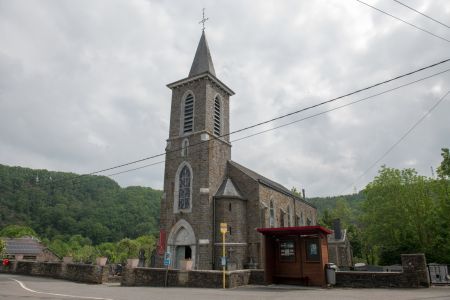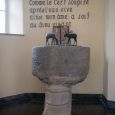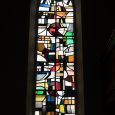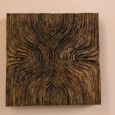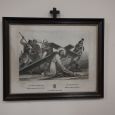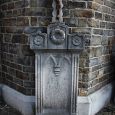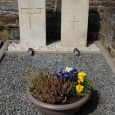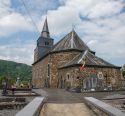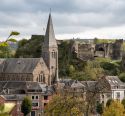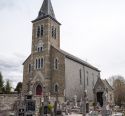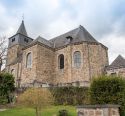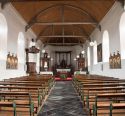Church | 1896 | Neogothic | Catholic Church




Map
Opening hours
01 June - 31 August
Mon 10.00 - 17.00
Tue 10.00 - 17.00
Wed 10.00 - 17.00
Thu 10.00 - 17.00
Fri 10.00 - 17.00
Sat 10.00 - 17.00
Sun 10.00 - 17.00
Religious offices
Description
In the 18th century, the church was severely damaged and a new neo-Gothic sandstone church was built at the end of the 19th century; this is the present church. After the war, the church roof and the wooden ceiling were replaced and it was restored in 1974.
Photos
Remarkable elements
Baptismal font:
the church has kept the baptistery with the baptismal font at the entrance. The baptismal font consists of a Romanesque (12th century) limestone baptismal font. It rests on a 50-centimetre-high Gothic (16th century) stone base, which may have been the base of a wall tabernacle. The vat is closed by a lid (1966) surmounted by a stag and a hind on either side of a cross, all in wrought iron; it is the work of J. Gresse de Marcourt. The stag is the image of the catechumen sighing after the water of baptism.
Sstained glass windows
The eight stained glass windows by Louis-Marie Londot were made between 1974 and 1977. The compositions are geometric and very colourful.
Tabernacle
The tabernacle is by Ph. Denis. Only the square door can be seen, with geometrical patterns.
Stele in memory of Anne Joseph Arnold (1802-1889) of Warisy
Anne Joseph Arnold donated most of the furnishings of the Warisy chapel and in particular: the high altar, the altar of the Virgin and that of Our Lady of Lourdes, the pulpit of truth, the Way of the Cross and the statues of Saint Joseph and Saint Anne (she was the great benefactor of the Warisy chapel and the church of Jupille).
Two steles commemorating the deaths of members of the Commonwealth forces
By the end of 1944, early 1945, the British had transformed the Monseur de Jupille farm into a hospital where nurses, doctors and surgeons were brought in. The wounded were brought back from the front. The two British soldiers buried at Jupille could be from the Hives area. Did they die during transport or did they die on the farm from their wounds? Why were they not buried with their fellow citizens in the English cemetery at Hotton? The Monseur family does not know. The mystery remains.
The texts of the 6 elements are taken from :
Jean-Marie Antoine - Un autre regard sur...nos cimetières.
Jean-Marie Antoine - Un autre regard sur... nos églises et nos chapelles.


